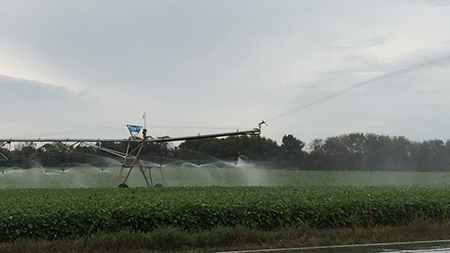In mid-May, a Senate committee advanced its version of the Regulatory Accountability Act, a bill that will benefit U.S. agriculture by making federal agencies more accountable and transparent in rule-making.
Under the RAA, federal agencies must provide the public with more information regarding the most costly regulations before initiating rule-making; undertake a cost/benefit analysis; select the most cost-effective approach; consider reasonable alternatives to proposed rules; and use the best scientific, technical and economic information.
RAA would prohibit agencies from using social media or engaging in propaganda to lobby the public, as the Environmental Protection Agency did when introducing its Waters of the U.S. rule.
If enacted, this bipartisan legislation would be the most significant regulatory reform to the Administrative Procedure Act since it was first passed in 1946. The APA drives federal rule-making but was enacted prior to the creation of federal agencies and laws that have profound effects on agriculture, including the Environmental Protection Agency, Clean Water Act, Clean Air Act, Endangered Species Act, Occupational Health and Safety Act, and the Food Safety Modernization Act.
The needs, magnitude and impacts of federal regulations are strong reasons for reform of the APA, as are other social factors, including the roles of activism, court litigation and social media in influencing regulations.
Some critics have said that the legislation will be too cumbersome and, ultimately, would prevent agencies from issuing rules. On the contrary, the RAA will apply only to major new rules that have more than a $100 million yearly impact. It also requires hearings on rules with more than a $1 billion annual impact, but limits the scope of hearings to genuinely disputed facts.
To look at the RAA in context of past regulations, its standards would have applied to about 2.2 percent of the more than 47,500 rules put in place since 2001. Another analysis conducted by the U.S. Chamber of Commerce showed that of the 32,882 agency regulations issued between 2008 and 2016, less than one-half of 1 percent would have been subject to any RAA provisions, and only one-tenth of 1 percent would automatically be subject to RAA because they would impose more than $1 billion in costs.
Ironically, with current political pressure to eliminate or roll-back regulations, RAA doesn’t discriminate or differentiate between regulation and deregulation – it applies to both. It potentially could reduce the likelihood of regulatory swings that could be created by policy preferences of ever-changing political majorities.
Even with changing political majorities, the need for transparency, sensibility and consideration of the economic costs have been recognized and reflected in executive orders about regulatory planning, regulation and review issued by Presidents Reagan, both Bushes, Clinton, and Obama. RAA codifies many of the best practices for analysis in rule-making enunciated by presidents from both major parties.
Farmers and ranchers believe regulations are needed to protect public health, food safety, worker safety, environmental quality and market fairness. They also believe the regulatory system needs to be fair, transparent and faithful to the will of Congress, cost-effective and respective of freedoms. The voices of those affected by rules should be heard and respected in the rule-making process. Reform is long overdue.


